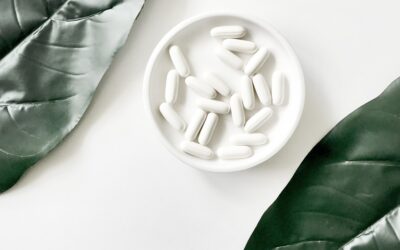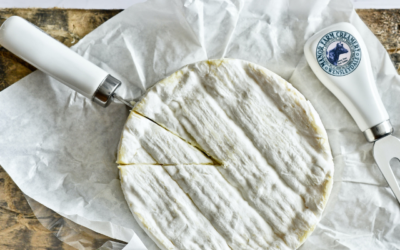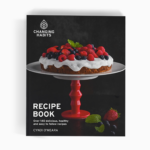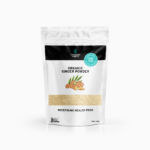Many of us vow to create fresh, colourful and nourishing lunchboxes for our little ones. We catch ourselves daydreaming about dedicating Sunday afternoons to preparing fresh, home-baked real food cakes and biscuits to complement that colourful array of vegetable sticks, homemade dips and seasonal fruits to create a lunchbox that even the fussiest eater will devour.
As parents, carers and role models to our children, how do we get this important job right? How do we navigate around the increase in children’s allergies and food policies enforced at schools and daycare centres while still providing our kids the nourishment they need? How do we get to the point where we can walk confidently into a food store and dodge the bombardment of mixed messages and health claims on packages and confidently choose nutrient dense foods to fuel our kids?
5 Tips for a Nourishing, Real Food Lunchbox
Here are 5 simple ways to help you create a nourishing lunchbox:
1. Plan ahead. Planning ahead saves time, money and minimises the risk of resorting to quick, nutrient-void foods. Planning ahead, or ‘meal prep’, does not have to be arduous or hugely time consuming. Simply pre-cutting carrots, cucumber, celery, capsicum and placing them in a container in the fridge means that you have real food go-tos when throwing the lunchbox together each school morning. Doing the same for your children’s favourite fruits (pre-cutting them into a container) will ensure your kids are being nourished with real foods.
2. Make your own. Many packaged products on our supermarket shelves can be laden with artificial colours, flavours and emulsifiers; all of which can play havoc on your child’s body. These ingredients may affect anything from your child’s behaviour, attention span, learning development, learning capabilities and social interactions to allergies, or even lead to the diagnosis of food-related diseases.
The best way to prevent this is to create your own snacks and know exactly what is in the food your children are eating.You can make wholefood alternatives to packaged chips, biscuits or cakes in bulk amounts at home and freeze them. This will not only save you money, but more importantly will save your children consuming a concoction of artificial ingredients that may put their little systems under stress.These types of homemade foods will last in the freezer for weeks or even months. Simply take out of the freezer and place in the lunchbox, and they will be thawed and ready to be demolished by your kids at morning tea or for lunch. See the Changing Habits recipes on their website for real food biscuits and cakes.
3. Read labels. If you cannot afford the time to create your own snacks for the lunchbox, that’s okay. But please afford yourself the time to read the labels of the foods you are choosing from the shelves and educate yourselves on any ingredient you are not sure of.
When looking at food packaging, try not to be persuaded or sold simply on what you can see plastered on the front.
Food companies will enlarge fonts of words that they know we are looking for, regardless of what is in the product they are selling – ‘Gluten free’, ‘real food’, ‘fair trade’, ‘healthy’, ‘no hidden nasties’, ‘perfect for the lunchbox’…whatever it may be, marketers know what we want. Unfortunately, a lot of foods don’t live up to the promises they make on their packaging. As a consumer you have the power of choice. By simply asking ourselves two questions, we can navigate through the mixed messages of clever marketing.
Ask yourself, ‘Is this real food?’ and ‘How far from real food is this food product?’ By simply turning that package over and looking at the ingredient list, you can answer these two questions and make a much more beneficial choice for your family. Ingredients are listed from the highest ingredient to the least. If you are seeing an ingredient like sugar first on the list, that is a hint to put it back. Likewise, if real food ingredients come listed after a bunch of numbers, you are probably looking at a product that is not actually ‘food’. Seeing numbers on an ingredient list means that you are venturing into the arena of man-made chemicals. These are so far from the real foods that we want to fuel our thriving children with. Man-made flavours or colours, as stated earlier, can have a big impact on your child’s body and possibly affect their potential to reach their optimum health.
4. Include more real foods. Being equipped with real food recipes and the knowledge to read food packaging and labels, you are in the perfect position to be providing your child with more real food choices. Sometimes it is important to sit back and realise that we don’t have to be giving our kids the latest ‘food’ product on the market, or fall for believing that without a man-made packaged item our kids may not be as healthy as they could be (the opposite is closer to the truth). Our children were born with the innate desire to consume real food; fresh seasonal fruits and vegetables. Our children will thrive on real foods.
And while initially the transition to incorporating more real foods may not be welcomed by your child, you will see a noticeable change when they are being nourished and fueled in the best possible way.
Real foods will not put stress on their systems. The body will innately know how to process the natural vitamins and minerals in their real food, rather than it working overtime to decipher what vitamin or mineral a lab has tried to mimic. Simply following the tips above, you will be well on your way to nourishing your child with real food. Gift your kids with real food, they deserve it.
5. Involve the kids. If your kid brings back the cakes and biscuits you recently made from your favourite real food blogger, or turns their nose up at the positive food changes you are trying to make, don’t panic! There are many reasons for this, and a transition back to a real food approach can take time. One way to make this a little more seamless is to include your kids in the process. Get the kids in the kitchen mixing the ingredients with you. Not only will they get quality time with you, but you can educate your child about the foods they eat. Talk about what is going into their lunchbox and why. Explain that the chosen foods in their real food treat will help them to play, dance, swim, sing – whatever they can relate to. This will improve their willingness to try what you are making and, maybe one day, they will even go to school gloating about what they have made.
Establishing a healthy connection with real food will empower your children to make food choices now, and, as they grow, it will give them a better chance at a future free from disease, improved quality of life, and the potential to truly blossom to their full health potential. There will inevitably be times throughout the year where you may not be able to execute everything exactly how you’d like. But coming back to these tips might help you to get back on track whenever you start to veer off it. Being aware of what is in food and understanding that sometimes packaging can mislead or negatively influence our purchasing decisions is a massive first step.
For some more top tips, you can watch Beck’s session at the Mind Body Spirit Festival in Brisbane here.








Brilliant information and tips for the kids. Thank you!
Great info… I also like to double cook the night before & include this in lunch boxes the next day. Always make sure the food travels well & try an icepack to keep things cool in this heat.
This was so useful that I have shared this article to my Facebook page! Thanks!
Thanks Leanne! We’re glad you found some top tips 🙂